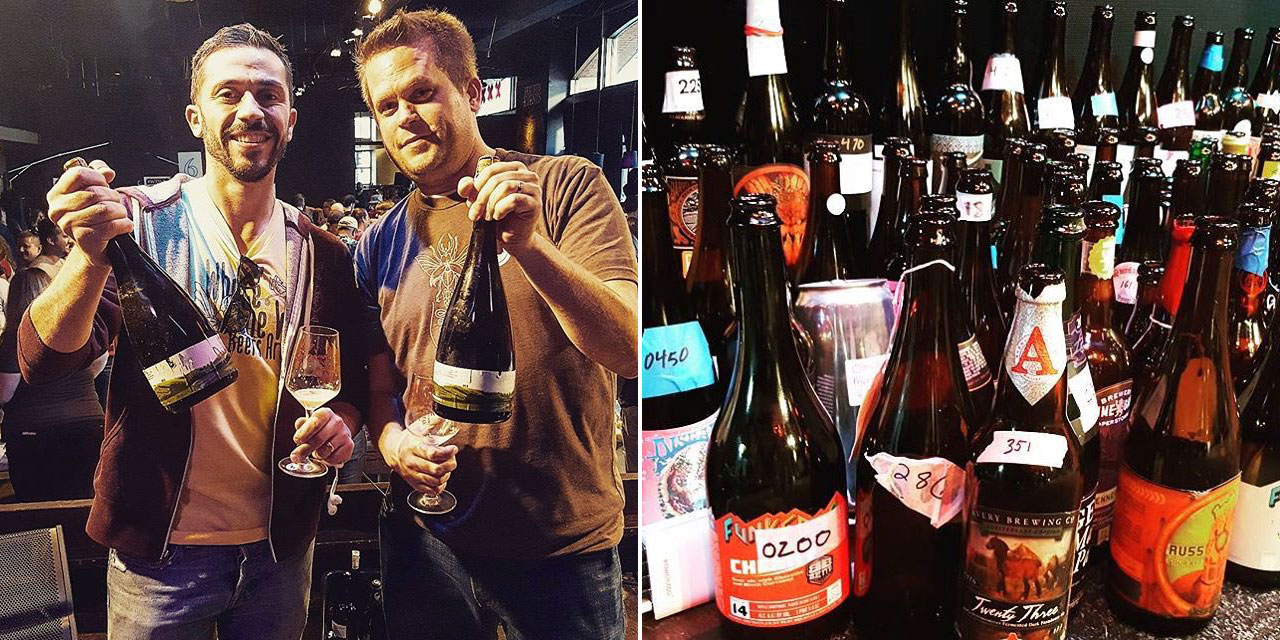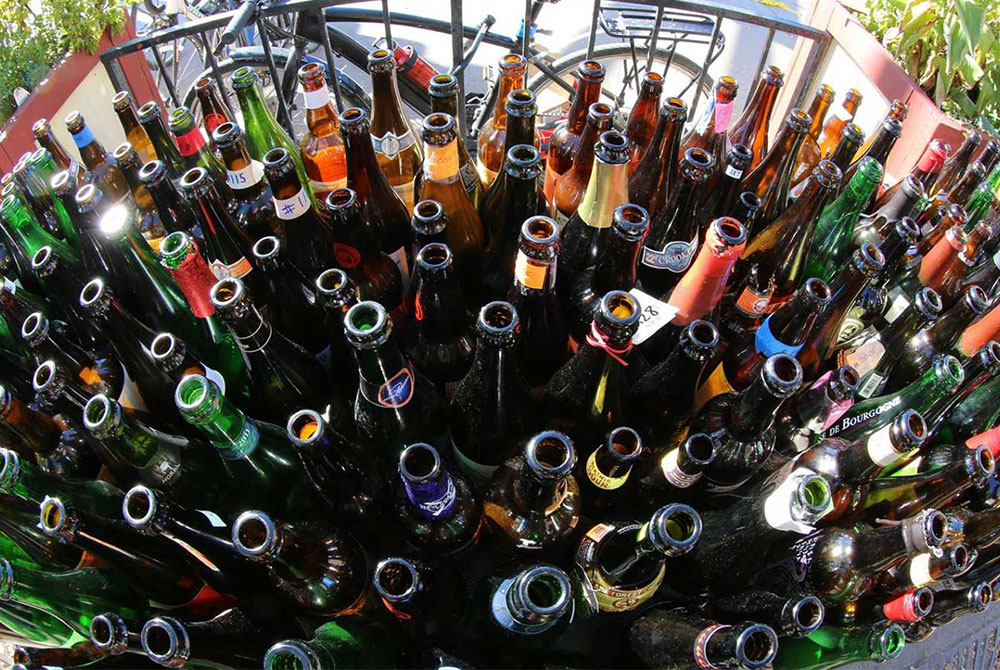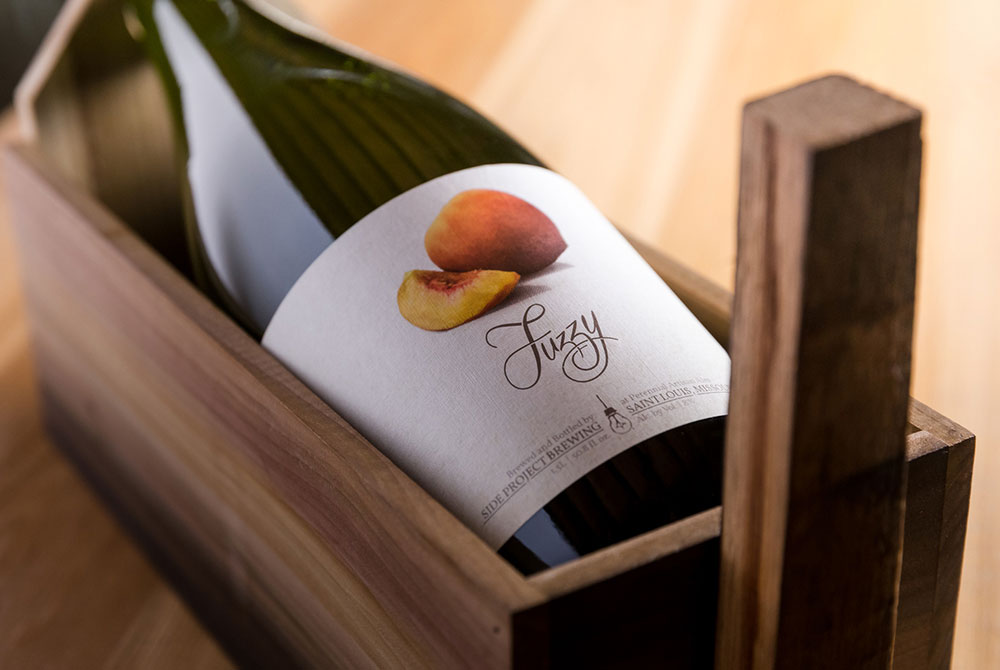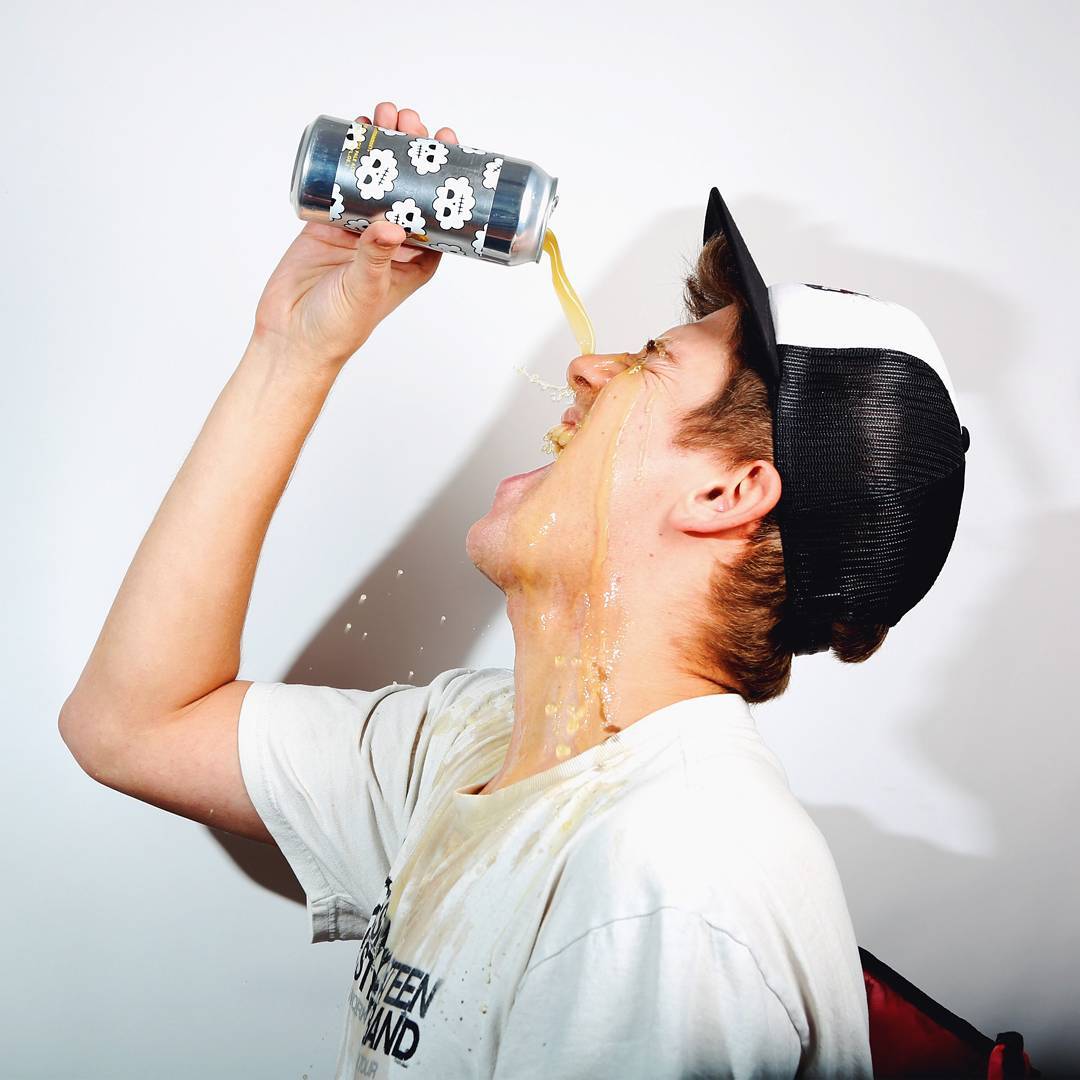Shop
The Greatest Little Beer Festival in the Nation
Chatting about Where The Wild Beers Are with its two founders.
Things we learned:
- Where The Wild Beers Are is one giant bottleshare.
- It’s being held in NYC on June 3rd and in St. Paul on September 30th.
- You don’t need breweries to hold a beer festival, but it sure helps.
- Allagash is making the best sours in America.
- You can do anything with 50 passionate people.
As craft beer has rocketed in popularity, the craft beer festival has become commonplace. This is both good and bad. At their best, beer festivals get a dozen of the nation’s best brewers in the same room, sharing their most unique beer with their biggest fans. At their worst, they are packed convention centers, dotted with a mismatch of whichever breweries would sign up, their beer being poured by festival volunteers who don’t know anything about the brewery besides its name. They are monetized day drinking events. A great time, to be sure, but not the best way to “experience” craft beer, if that’s what you’re into.
Where The Wild Beers Are is in a category all its own. Held twice annually — NYC in the spring and St. Paul in the fall — the festival is likely the most well-respected bottle share in the nation, where megafans come together to show off their most prized beers. “The core of WTWBA is essentially a highly organized, highly vetted, beer potluck,” says Tim Stendahl, who along with Jeff Halvorson, founded the event in 2008. Festival participants bring sour, wild, and/or farmhouse beer bottles to the event, where they are checked into a cellar and poured by festival volunteers “alongside other beer they feel is complimentary.” All bottles are registered ahead of time on the festival’s website in order to limit duplication and maintain quality.
Despite being well-respected by the craft community and a darling of the national media, WTWBA has been “far from a financial windfall,” says Stendahl. “We’ve been a hair’s breadth from having to shut it down a few times, but we press on as a passion project.” This mentality is the ethos at the core of independent brewing, and that hasn’t gone unnoticed. This year, in a festival first, Stendahl and Halvorson partnered with a handful of brewers, inviting them to come pour their own wild beer at the festival.
“It’s about the love, not the money! The guys who put it on are doing the right thing,” said Jeff O’Neil, the founder of Industrial Arts, “They made a point of including us and I definitely wanted to help them out!” O’Neil is a legend in the wild beer world for his work at Ithaca, and just one of seven breweries that will be at the festival.
I caught up with Stendahl and Halvorson to understand how a grassroots event among beer fans has grown into the greatest little beer festival in the nation.
J. Travis Smith: Why wild beer?
Tim Stendahl: At the time we started the event, “sour beers” were not a viable part of the industry — they were nearly non-existent. Cantillon, 3Fonteinen, and Fantome bottles were easily accessible on store shelves, but the only domestic breweries with a sour program and any sort of national presence were the Funky 5: Allagash, Russian River, Avery, Lost Abbey, and Dogfish Head. The purpose of the event was to cultivate a community around the style or at least draw those who loved these under-appreciated beers together and share our treasures.
The purpose of the event was to cultivate a community around the style or at least draw those who loved these under-appreciated beers together and share our treasures.
JTS: How did you initially decide to hold the festival?
TS: Jeff and I met at a firkin fest at The Happy Gnome in St. Paul, MN. He was tending a booth with a lambic on draught. I’d been introduced to lambics and gueuzes about a year prior and had started collecting them. So Jeff and I started talking about the style and we both acknowledged having far too many bottles than we could drink by ourselves. Jeff had been cooking up this idea for a big bottle share and the ideas for the event started gathering steam. I was a single, underemployed beer geek working two part-time jobs, so I pestered Jeff into putting time, energy, and money into the event, despite the fact that he was married, had a demanding full time job (in addition to his beer work), and children.

JTS: What did that first WTWBA in 2008 look like?
TS: It was at Stub & Herbs in Minneapolis. There may have been 50 people there with a few volunteers. But the level of beers was unbelievable. Cantillon Iris was on tap, but it was hardly touched because everyone brought so many one-of-a-kind beers. Examples include: Cantillon Loerik, Cantillon 50N 4E, Cantillon Rose de Gambrinus (1986), Russian River Sanctification, Russian River Consecration, Lost Abbey Isabelle Proximus.
JTS: How does a bottle share festival work?
TS: For every 750ml (25.4oz) of beer contributed, participants receive ten 2-ounce sample pours. We find that 2-3 great 750ml bottles is adequate for people and gives great variety without excess. For those bringing rare highly-coveted bottles, we try to give a few extra samples as a thank you.
2017 WTWBA Brewery Lineup (New York)
- Equilibrium Brewing — Casey Passionfruit, TABA Blackberry
- Grimm Artisan Ales — Rainbow Dome, TBD
- Hudson Valley Brewery — Isosceles, Kinds of Light
- Industrial Arts Brewing — Jigsaw, Safety Dance
- Suarez Family Brewery — Back Roads, Call to Mind, Big Night, 100 Feet North
- Threes Brewing — Threes/Fair State Wit Collab (Name TBD), Eternal Return Cherry
- Fair State Brewing — Grodziskie, Simple Sour, LÄCTOBÄC
JTS: What do you attribute the success of the festival to? Did you think this would be a decade-long project when you first began?
TS: It’s funny that you ask about the success of the event. WTWBA has been far from a financial windfall — quite the opposite. We have been a hair’s breadth from having to shut it down a few times, but we press on as a passion project.
In my mind, the biggest success is that the event is well respected among those in the beer industry and that participants tend to return year after year. Everyone seems to enjoy it — breweries, participants, and volunteers. By design, it’s still relatively small: only 200-300 people per event. We like the intimate nature of the event. And that’s the fun for me — watching newbies being welcomed with a glass of Cantillon Gueuze and exploring table to table sampling new and exciting beers. Similarly, those who collect or trade specifically for the event tend to get the same type of satisfaction watching others enjoy the beers they brought.

JTS: Why did you choose to incorporate breweries this year?
TS: So many domestic breweries are producing excellent sours that it seemed silly to not incorporate them somehow. But it needed to be purposeful to be impactful. Given the excitement around local breweries, it made sense to start with local producers, but again, it needed to be purposeful. We chose to invite breweries that either have a specific focus on the styles or have brewers with a pedigree in the craft of sours. We also wanted to be deliberate about paying for beer. Many events require breweries to donate their beer. We believe there is an intrinsic value in the beer and brewers should be compensated for that.
JTS: What other festivals do you respect? Any that you drew inspiration from?
TS: I tend to shy away from other events since I work in beer everyday, but there are a few I make a point to attend: Captain Lawrence puts on a great event every September called Sour’d; Belgium Comes to Cooperstown is a perennial must-go — one that requires more coordination than I could imagine; Allagash also hosts a Street Fair that I try to get to every year.
Jeff Halvorson: One of the catalysts for the event was Delilah’s Lambicfest in Chicago which I attended several times in the mid-2000s. Dozens of great lambics, in a flat black painted punk bar. Such a laid back, amazing event. Given no Minneapolis/St. Paul bar was hoarding bottles to that scale, it seemed that a beer pot luck was our best chance to do anything similar.
Likewise in Chicago the Real Ale Fest, which held quality over all else, was a huge inspiration. The amount of work Ray Daniels and crew put into that event was incredible. There are plenty of other great fests out there, but the smaller niche ones always stood out.
JTS: How has your preference for beer changed in these last 9 years?
TS: As many beer obsessed people do, I have gone through a progression of wanting nothing but high abv, tongue-numbing IPAs to now wanting more nuanced pilsners and pale ales. I’m still a sucker for a really well-made American wild ale.
JH: I’m still die-hard for quality saisons and lambics as well as quintessential import classics like Westmalle, Orval, Bluebird Bitter, etc (which are getting hard and harder to find fresh domestically). I find myself drinking way more pils now. If someone came up with an affordable, fresh altbier similar to Uerige I’d probably have it on tap at home regularly.
Side note: had we known what we know now, we may have held onto the Cantillon Loerik and Isabelle Proximus we opened the very first event for a bit longer.
JTS: Favorite beer/breweries?
TS: Allagash continues to set the standard for American sour producers, in my opinion. Everything they make is a home run, everyone I know at that brewery is a wonderful person, and their employees are immensely loyal. That speaks to the strong culture and how well they treat their employees.
JH: Agreed. Allagash continues to be a top 3 brewery for me and yet they haven’t been in the Minnesota market since the very early 2000’s. Nudge nudge.
JTS: What are the craziest beers you’ve seen at the festival?
TS: One of our most committed participants year after year is a gentleman named Randall. He was a regular at the wine shop I worked at in St. Paul and an avid trader. He contributed two complete sets of the 3 Fonteinen Armand series along with an early 80’s Rodenbach and so much more. We are forever in his debt.
Side note: had we known what we know now, we may have held onto the Cantillon Loerik and Isabelle Proximus we opened the very first event for a bit longer.




